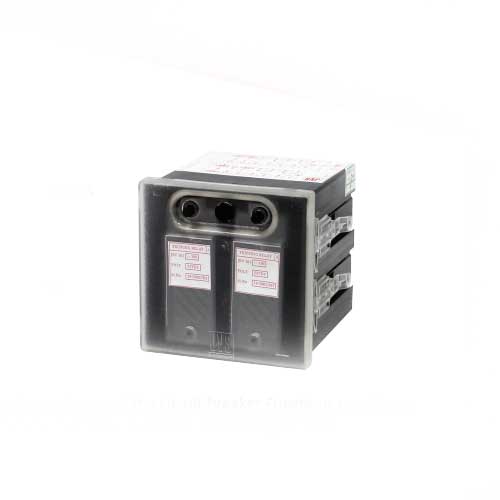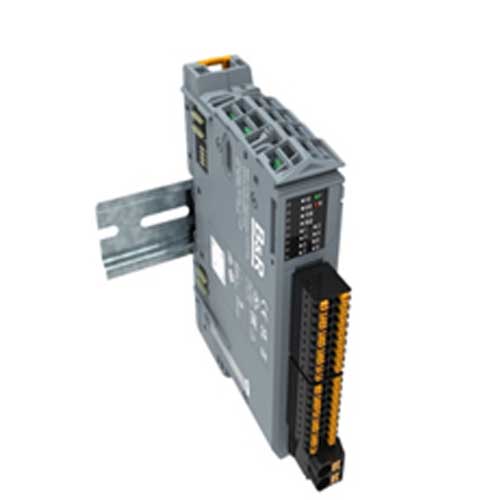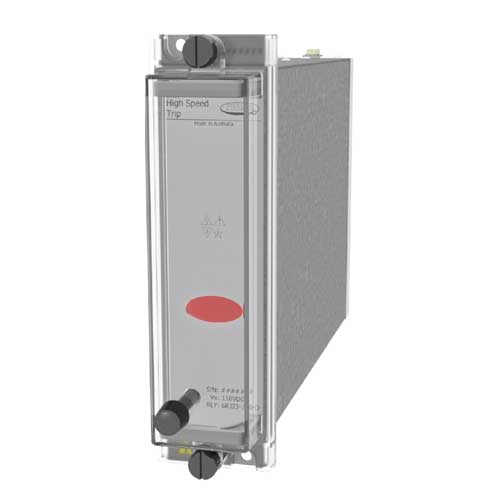Schedule a Call Back
Automotive Industry: Stepping on the Accelerator
 Technical Articles
Technical Articles- Feb 01,16
By 2026 the Indian automotive industry is expected to be among the top three players in the world in engineering, manufacture, and export of vehicles and components.
For nearly 4 decades after independence, India had only three manufacturers in the passenger car field – Hindustan Motors, Premier Automobiles and Standard Motors; two in the commercial vehicles arena – Tata Motors and Ashok Leyland; and a few players in the 2- and 3-wheeler segment dominated by Bajaj Auto. The situation changed in the 1980s with the formation of Maruti Udyog Ltd in collaboration with Suzuki of Japan. Later in the same decade came the Japanese collaborations for 100cc motorcycles and LCVs with Indian partners, and the rest, as the cliché goes, is history. Today, all major global players in each segment of the automotive sector are present in India, and the country is a significant exporter of vehicles, and a major exporter of automotive components.
With an average annual production of 23.36 million vehicles, India today is the seventh largest automobile producer in the world. The industry during FY 2014-15 recorded a growth of 8.68 per cent over the previous fiscal, outstripping the overall growth. The automobile market in India comprises of passenger vehicles, commercial vehicles, 2- and 3-wheelers, and accounts for 7.1 per cent of the country’s gross domestic product (GDP). For the record, the two-wheeler segment with 81 per cent market share is the leader of the Indian automobile market with passenger vehicles a distant second at 13%, with commercial vehicles and three-wheelers at 3% each. In fact the sector is not only witnessing strong growth, but is also expected to grow further. By 2017, India is estimated to become the third largest market with nearly five per cent of total vehicle sales.
Among the recent developments in the sector are:
*Maruti Suzuki, the market leader with over 50% of the share is building a third plant in India, this one in Gujarat, which will be owned by the parent Suzuki, which will double its capacity to two million vehicles per annum, and spend Rs 15,000 crore over the next 5 years to expand its dealership network which is presently 1700 strong, the largest in the country
*Ford Motors, a global automaker, plans to manufacture in India two families of engines by 2017, a 2.2 litre diesel engine codenamed Panther, and a 1.2 litre petrol engine codenamed Dragon, which are expected to power 270,000 Ford vehicles globally
*Another global manufacturer, General Motors plans to invest US$ 1 billion in India by 2020, mainly to increase the capacity at the Talegaon plant in Maharashtra from 130,000 units a year to 220,000 by 2025
*Not to be left behind, US-based Chrysler has planned to invest Rs 3,500 crore (US$ 525 million) in Maharashtra, to manufacture Jeep Grand Cherokee model, and
*Mercedes Benz has decided to manufacture the GLA entry SUV in India. The company has doubled its India assembly capacity to 20,000 units per annum.
The 55th Society of Indian Automobile Manufacturers (SIAM) Annual Convention in September 2015 witnessed the curtain raiser for the Automotive Mission Plan 2016-2026 (AMP 2026), the second edition after AMP 2006-2016. AMP 2026, a collective vision of Government of India and the Indian Automotive Industry, is aimed at mapping the progress of the automobile industry in India and setting targets and goals for this sector over the next ten years. It addresses areas of relevance including growth in terms of size, contribution to India’s development, global environmental footprint, technological maturity, safety, competitiveness, and institutional structure and capabilities. The idea is for India to emerge as the world’s destination of choice for design and manufacture of automobiles and auto components with output reaching a level of USD 145 billion, accounting for more than 10% of the GDP; the setting up of a technology modernisation fund focusing on small and medium enterprises.
During the unveiling of the document at the final session of the SIAM Annual Convention, Mr R Raghuttama Rao, Managing Director, ICRA Management Consulting Services (IMaCS), talking about the key achievements of the AMP 2006-2016, said that the investments under AMP 2016 exceeded Rs 1,60,000 crore. The industry is poised to generate more than 35 million jobs by the end of 2016. It is on-course, as per the AMP 2016, to hit the base-case target of Rs 5,49,000 crore revenue by the end of FY16. One of the key learnings he said was “the need of greater institutional coordination.” Stating the vision of AMP 2026, he said, “By 2026 the Indian automotive industry will be among the top three of the world in engineering, manufacture, and export of vehicles and components and will encompass safe, efficient and environment friendly conditions for affordable mobility of people and transportation of goods in India comparable with global standards, growing in the value to over 12% of India’s GDP, and generating an additional 65 million jobs.”
After two years of down cycle, there was some recovery in the Commercial Vehicle (CV) industry during FY 2015. Though there was no growth, the decline was arrested to a large extent. But sales have since picked up and the overall CV segment registered a growth of 8.02 per cent during April-October 2015 as compared to same period last year. Medium and Heavy Commercial Vehicles (M&HCVs) registered a growth at 32.26 per cent while Light Commercial Vehicles (LCVs) declined by (-)5.24 per cent during April-October 2015 over the same period last year, according to statistics released by SIAM. The bus segment, which contributes nearly 13% to industry sales, has also started witnessing an improvement from Q3 FY15 onwards after various State Road Transport Undertakings (SRTUs) started placing orders for new buses as part of the JNNURM II programme.
For FY 2016, most commercial vehicle manufacturers expect a growth of 20% overall and feel this could finally signal a return to the heady days of 2009-12. While the competition in the HCVs is growing with new multinational companies like Daimler India Commercial Vehicles Pvt Ltd and Scania Commercial Vehicles India Pvt Ltd raising their stakes to give segment leader Tata Motors Ltd and runner up Ashok Leyland Ltd a run for the money, in small commercial vehicles, Mahindra & Mahindra Ltd is snapping at the heels of Tata Motors. A positive sentiment augurs well and will certainly justify the installed capacity of the industry facing hard times during the last three years.
 Exports are picking up too. Ashok Leyland recently signed a contract with the government of Cote D’Ivoire for 3600 vehicles worth USD $200 mn. This contract is being funded by EXIM Bank of India and is pending final clearance from respective governments. The vehicles, which include trucks and buses, will be delivered over the next 12 months. Speaking at the occasion, Mr Vinod K Dasari, Managing Director, Ashok Leyland said, “This is the largest contract for this country with any firm in India, and also represents the largest such contract till date for the company.”
Exports are picking up too. Ashok Leyland recently signed a contract with the government of Cote D’Ivoire for 3600 vehicles worth USD $200 mn. This contract is being funded by EXIM Bank of India and is pending final clearance from respective governments. The vehicles, which include trucks and buses, will be delivered over the next 12 months. Speaking at the occasion, Mr Vinod K Dasari, Managing Director, Ashok Leyland said, “This is the largest contract for this country with any firm in India, and also represents the largest such contract till date for the company.”
In fact DICV, a 100% wholly owned subsidiary of Daimler AG, Stuttgart, Germany along with Mitsubishi Fuso Truck and Bus Corporation, Japan (MFTBC), a Daimler Company, recently started the export of its robust DICV-made FUSO trucks to Cambodia, making it the 13th market for DICV. This market is growing rapidly in many sectors like garments, logistics, mining and constructions. The first vehicles have been retailed and delivered to customers. For these sectors, out of the 5 newly developed FUSO truck models manufactured at DICV’s Oragadam plant, the ‘FA’, ‘FI’ and ‘FJ’ models have been chosen to reinforce FUSO’s leading presence in Asia. These robust and fuel-efficient trucks are already being exported to Kenya, Sri Lanka, Zambia, Tanzania, Zimbabwe, Bangladesh, Brunei and Indonesia, and are now on their way to Cambodia. The Tata Prima, billed as the ‘World-Smart Truck’, is already being exported to the emerging markets. The Prima range has already hit markets like Vietnam, South Africa, Malaysia and Kenya, besides other Asean, Arab and African countries. It has recently launched in Bangladesh.
Another global major’s India operations, Scania Commercial Vehicles India Pvt Ltd, has launched the most powerful on-road truck for the first time in India. The Scania R 580 with capacity of gross combination weight (GCW) 200 tonnes when coupled with multi-axle trailer is now defined under a new category called Puller. Scania has become the first commercial vehicles manufacturer in India to receive this certification from the Automotive Research Association of India (ARAI). It is powered with a V8 engine and offers high torque at low speed, which is essential for over-dimensional cargo (ODC) transport. “A fast growing Indian economy demands a rapid and reliable product to support the growing need of high quality transport solutions, Scania products complement and support the demands for robust, powerful and trusted vehicles,” said Anders Grundströmer, Managing Director, Scania India, and Senior Vice President said about the company’s plans for India.
Auto Components
According to the MSME Report 2015, brought out by the Kochi based, Institute of Small Enterprise and Development (ISED) released in November 2015, India is an emerging global hub for sourcing auto components besides being geographically close to the key automotive markets like the ASEAN, Japan, Korea and Europe. The country also has significant cost competitiveness, especially in relation to critical raw materials like steel. “While the ‘Make in India’ agenda has rightly identified automobiles as a focal sector, there is much need for fully tapping the potential of auto components, especially in the MSME sector. It is important that rather than having a segmented approach in government, auto components need to be viewed in a sub-sector context,” says Dr P M Mathew, Director, ISED. The Automotive Component Manufacturers Association (ACMA) estimates that component export figures would reach USD 9.4 billion in 2015, an indicative of the strength of this sub sector.
Companies like Sundaram Fasteners were the early players in automotive component exports even before the modernisation industry began after the arrival of Suzuki as a partner for Maruti, when vendor development programmes began in earnest. Over the years, the auto component industry in India has developed the capability to manufacture almost all components required to assemble vehicles as evident from the high levels of indigenisation in several models of cars across companies. Even high end luxury cars like Mercedes and BMW today are boasting of 60% localisation of components. Models like the Tata Motors’ Indica and Indigo, Mahindra Scorpio and its derivatives and a whole range of motorcycles from Hero, Bajaj and TVS stables are totally indigenous products. The component industry of India can manufacture the entire range of components required to build all types of automotive vehicles indigenously – engines and engine parts, drive and transmission parts, suspension and braking parts, body and chassis parts, electricals and other equipment, etc.
With one million direct employees, and as many indirect, the Rs 2,11,765 crore (USD 35.13 billion) Indian auto component industry is still small in the global context, but one that is growing and holds tremendous potential, and is evolving rapidly. While in the 1990s, more than 80% of India’s component exports were to the international spare parts market, by 2005, 70% of exports were shipped directly to global car and truck manufacturers or their Tier-1 suppliers. The Make in India initiative will only bring in more players to the Indian market and stimulate growth for the domestic auto components industry. The industry believes exports could cross USD 30 billion by 2020, with at least five Indian suppliers breaking in the global top 100 list.
Related Stories

Mahindra’s Thar ROXX, XUV 3XO, and XUV400 earn 5-Star Bharat-NCAP rating
Thar ROXX has made history by becoming the first body-on-frame SUV to secure a 5-star Bharat-NCAP rating, achieving the highest overall score by any ICE vehicle in Bharat-NCAP testing.
Read more
Epigral Limited to expand CPVC and Epichlorohydrin facilities
With this expansion, Epigral's total CPVC resin capacity will be elevated as the largest resin facility in the world and Epichlorohydrin will be the largest facility in India.
Read more
Mushin Labs raises $250K in seed series round led by Inflection Point Ventures
Mushin Innovation Labs, a pioneering SaaS startup, is transforming the automotive manufacturing industry with its advanced digital solutions.
Read moreRelated Products

High Speed Tripping Relay Two Element Relay - Jrv 181x2
JVS Electronics Pvt Ltd offers a wide range of high speed Read more

Plenty of Motion Possibilities in a Compact Housing
B&R Industrial Automation offers a wide range of plen Read more

High Speeed Tripping Relay Three Element Relay
JVS Electronics Pvt Ltd offers a wide range of high speed tripping relay three element relay - JRV 181x3.














